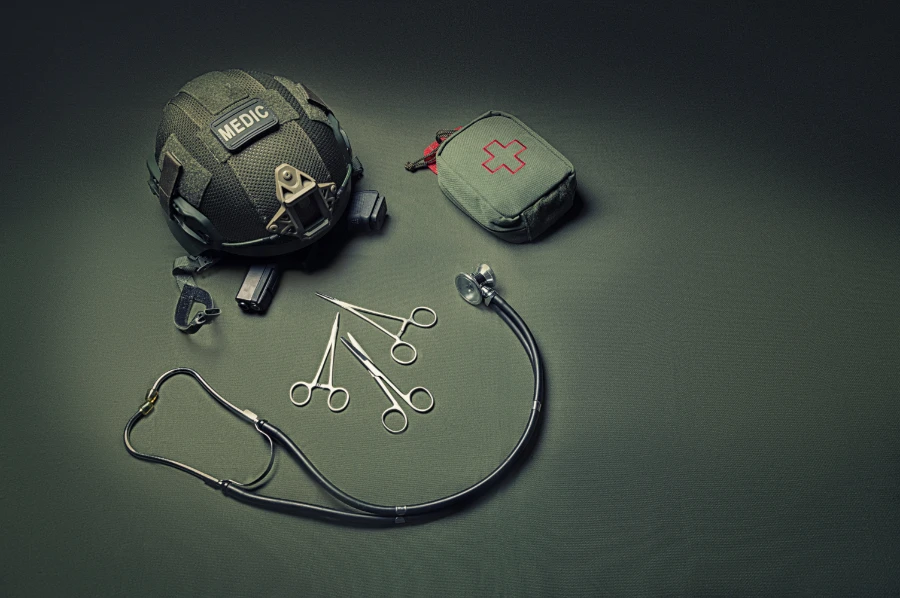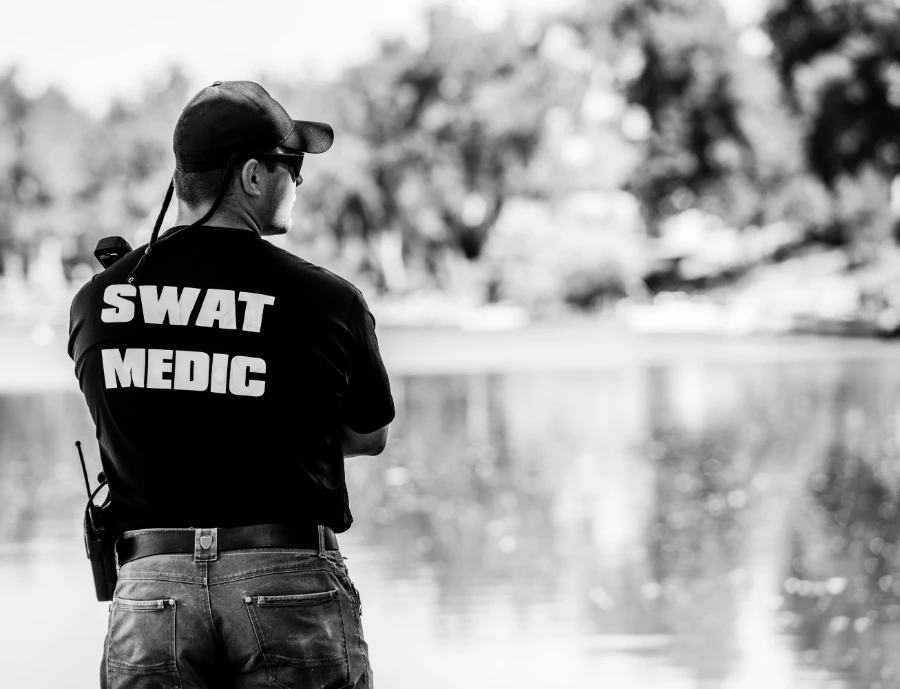The profession of a SWAT paramedic, particularly in South Florida, is both challenging and rewarding. These paramedics are trained to provide medical care under some of the most extreme circumstances, often when the conventional emergency services would be too at risk. To thrive in this demanding environment, an individual needs a combination of medical knowledge, tactical understanding, and the mental fortitude to operate under intense pressure. Here’s an exploration of the learning curve required to become a SWAT paramedic in South Florida:
1. Basic Qualifications
Before one can pursue specialization as a SWAT paramedic, one must first be a paramedic:
- EMT Certification: Begin with becoming an Emergency Medical Technician (EMT). This requires successful completion of an EMT course, which usually takes a few months.
- Paramedic Certification: After gaining some experience as an EMT, one can proceed to a paramedic program. This typically requires at least 1,200 hours of instruction and can take up to two years to complete.
2. Degrees and Diplomas
While not always mandatory, having a degree can be beneficial:
- Associate’s Degree in Emergency Medical Services (EMS): Many institutions in South Florida offer this two-year program, which delves deeper into advanced medical procedures and pharmacology.
- Bachelor’s Degree: Some SWAT paramedics pursue degrees in fields like healthcare administration, which can be beneficial for career advancement.
3. Tactical Medical Training
This is where the distinction between a regular paramedic and a SWAT paramedic becomes clear:
- Tactical EMS training: Various courses are available in South Florida, focusing on operating in high-risk environments, such as active shooter situations or hostage scenarios.
- Ballistic Training: Given the frequent involvement of firearms in SWAT operations, understanding ballistic injuries is crucial.
4. Specialized Knowledge
South Florida presents unique challenges, from diverse populations to weather-related emergencies:
- Environmental Injuries: Training on how to deal with injuries resulting from hurricanes or floods can be paramount.
- Bioterrorism and Hazardous Materials: Courses on dealing with hazardous materials or potential bioterror threats equip SWAT paramedics with the knowledge to handle these specific situations.
5. Physical and Mental Preparedness
Given the high-stakes nature of the job:
- Physical Training: SWAT paramedics often undergo rigorous physical training to ensure they can endure demanding situations.
- Mental Health and Resilience Training: Building mental resilience is crucial. Some programs focus on equipping paramedics with coping mechanisms for the intense stress they might encounter.
6. Continuous Learning
Medicine and tactics are fields that constantly evolve. Therefore, continuous education and re-certification are essential. SWAT paramedics should always be on the lookout for advanced courses or workshops to stay updated.
SWAT paramedics represent a unique fusion of tactical skill and medical expertise, performing under some of the most intense and challenging circumstances imaginable. Their rigorous training and diverse responsibilities set them apart from conventional medical personnel. As the linchpins in ensuring the well-being of SWAT teams, civilians, and even suspects, they’re equipped with a wide array of specialized skills. Let’s delve into the eight crucial aspects of a SWAT paramedic’s role that define their unparalleled significance in tactical operations:

1. Tactical Medicine Training
In high-risk operations, understanding the nuances of tactical medicine is paramount for SWAT paramedics. This specialized field focuses not just on providing medical care but on doing so in intense, often dangerous situations. Training includes learning how to swiftly assess injuries in active scenarios, administer rapid treatment amidst potential threats, and extract casualties from hazardous environments. Furthermore, tactical medicine emphasizes situational awareness, allowing paramedics to not only treat injuries but also anticipate potential medical risks, ensuring both their safety and that of their patients.
2. Care for SWAT Teams
The bond between SWAT members and their paramedics is deeply rooted in trust. SWAT operations often involve scenarios where team members are vulnerable to injuries – from minor abrasions to life-threatening gunshot wounds. Paramedics must quickly diagnose and treat these injuries, ensuring the team can either continue their mission or be safely evacuated. Their presence, therefore, not only offers medical assurance but also boosts the team’s morale and confidence during operations.
3. Care for Civilians and Suspects
A SWAT paramedic’s duty transcends beyond the team. In situations where operations affect civilians or even suspects, ethical and professional responsibilities demand their medical attention. Whether it’s a bystander caught in a crossfire or a suspect injured during apprehension, SWAT paramedics provide unbiased, critical care. This commitment to saving lives, irrespective of affiliations, underlines their pivotal role in maintaining community trust.
4. Self-Defense Training
While their primary role is medical, SWAT paramedics often find themselves in volatile situations. Self-defense training is not a luxury but a necessity. It empowers them to fend off potential threats and ensures that they can continue their medical duties without becoming casualties themselves. Techniques range from hand-to-hand combat to evasion tactics, all aimed at maximizing personal safety in unpredictable environments.
5. Weapons Usage
Weaponry is a significant aspect of SWAT operations, and paramedics receive foundational training in this area. Their primary focus isn’t aggression but defense and control. Understanding weapon handling helps in situations where they might need to disarm or restrain individuals to prevent harm. This knowledge ensures that they can operate in tandem with their SWAT teammates, contributing to the overall mission’s success.
6. Specialized Injury Treatment
SWAT environments present unique medical challenges, especially ballistic injuries. Given the prevalence of firearms in such operations, paramedics receive in-depth training on gunshot wound care. This includes understanding trajectories, treating entry and exit wounds, and preventing complications. In addition, knowledge of blast injuries, shrapnel wounds, and trauma resulting from explosions is vital, ensuring comprehensive care in dynamic scenarios.
7. Biological Threat Response
In a world of evolving threats, SWAT teams occasionally deal with biological hazards. Whether it’s a bioterror attack or an accidental exposure, SWAT paramedics are trained to respond efficiently. This entails recognizing symptoms, administering antidotes or treatments, and ensuring containment to prevent broader exposure. Their role becomes even more critical as they bridge the gap between field response and hospital care.
8. Environmental and Spinal Injuries
SWAT operations can sometimes occur in challenging environments, leading to specific injuries. From burns sustained in fires to chemical exposure or injuries resulting from building collapses, paramedics must be adept at providing care. Spinal injuries, a common concern in traumatic events, require meticulous attention to prevent long-term damage. SWAT paramedics, therefore, receive training to stabilize spinal injuries, ensuring patients’ best possible outcomes.
Summary: SWAT paramedics operate at the intersection of medicine and tactical operations, ensuring safety and medical care in high-stakes scenarios. Their multifaceted training and unwavering commitment make them indispensable. For those aspiring to walk this challenging yet rewarding path, it’s worth exploring how to become a SWAT paramedic.
Jeromy VanderMeulen is a seasoned fire service leader with over two decades of experience in emergency response, training, and public safety management. He currently serves as Battalion Chief at the Lehigh Acres Fire Control & Rescue District and is CEO of the Ricky Rescue Training Academy, a premier provider of online and blended EMT and firefighter certification programs in Florida.
Jeromy holds multiple degrees from Edison State College and the Community College of the Air Force, and is pursuing his MBA at Barry University. He maintains top-tier certifications, including Fire Officer IV, Fire Instructor III, and Fire Inspector II, and has served as a subject matter expert for a court case. He is a member or the Florida Fire Chiefs Association.
Jeromy also contributes to state-level fire safety regulation and serves on several hiring and promotional boards.

